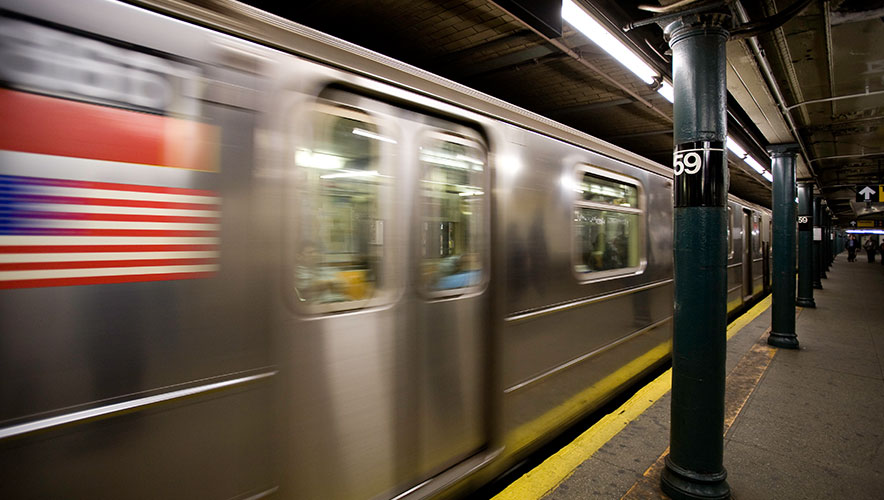NYC Invests in Subway Car Surveillance to Soothe Rider Concerns
Subway riders are returning to pre-pandemic levels in New York City, but their satisfaction around safety and security remains low, resulting in an overall subway satisfaction rate of just 48 percent. Among people who use the subway less now than before COVID-19, personal security was the top reason for the reduction in use. This sentiment, combined with several high-profile incidents of crime on subway trains and platforms in the past year, led the Metro Transit Authority (MTA) New York City (NYC) Transit to turn to surveillance.
Thanks to a $2 million award through the Urban Area Security Initiative federal grant program and an additional $3.5 million from the Subway Action Plan, the MTA will install video surveillance cameras across the entire fleet of 2,700 New York City Transit subway cars, with two cameras per car. The program will also fund the expansion of surveillance in 130 subway stations, adding around 3,800 cameras to NYC Transit’s current security network of more than 10,000 cameras in 472 subway stations, the MTA announced.
The project is expected to take three years to complete, with around 200 cars being outfitted with cameras every month, New York Governor Kathy Hochul said at a press conference on 20 September.
“You think Big Brother’s watching you on the subways? You’re absolutely right,” Hochul said. “That is our intent—to get the message out that we’re going to be having surveillance of activities on the subway trains, and that is going to give people great peace of mind.”
Considering any privacy concerns, Hochul noted: “If you’re concerned about this, the best answer is don’t commit any crimes on the subway.” That is unlikely to quell worries from civil liberties groups, who told the Associated Press that the MTA’s lack of transparency around its camera and software systems has raised concerns in the past.
“Big Brother’s spying never prevented crime before, and it won’t start now. This tech has failed us too many times to count,” Albert Fox Cahn, the executive director of the group the Surveillance Technology Oversight Project, told AMNY. “This surveillance theater won’t just put New Yorkers at risk, it’s ripe for abuse by the NYPD. We deserve better than digital stop and frisk.”
The MTA’s existing surveillance system hasn’t always worked well—while footage was helpful in identifying a suspect who allegedly shot 10 people on a subway train in April, the MTA failed to record footage from cameras on the platform where the gunman made his escape, the AP reported.
MTA Chairperson and CEO Janno Lieber said that the system would undergo more predictive maintenance so that the MTA could fix or replace malfunctioning cameras and other security equipment before it fails.
The MTA plans to install security cameras in every subway car in New York City to help reassure riders, a plan that grew from a pilot project following a mass shooting in Brooklyn earlier this year. https://t.co/DcBGFpRjRo
— The New York Times (@nytimes) September 20, 2022
The new cameras will not be monitored live, but they will serve as a deterrent and a source of evidence during investigations, Hochul said. The system will ideally help riders feel safer. In the MTA satisfaction survey released this week, nearly 70 percent of riders said there were too few police officers in the subway station, and barely more than 50 percent said they felt safe or very safe in stations and on trains. Even so, crime on public transit within New York City is averaging slightly below pre-pandemic levels, the AP noted.
